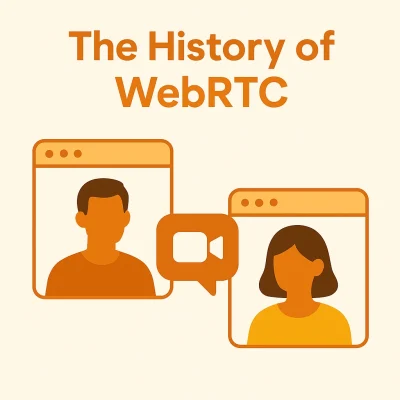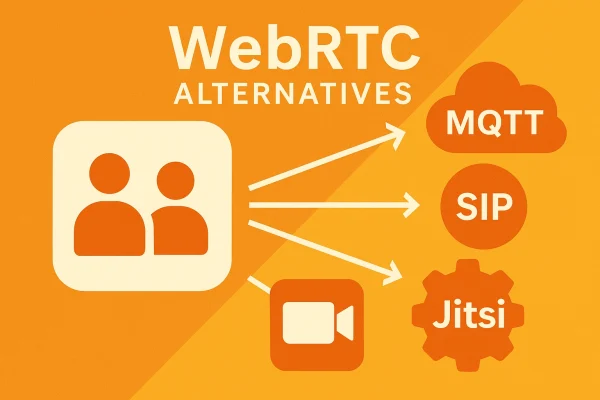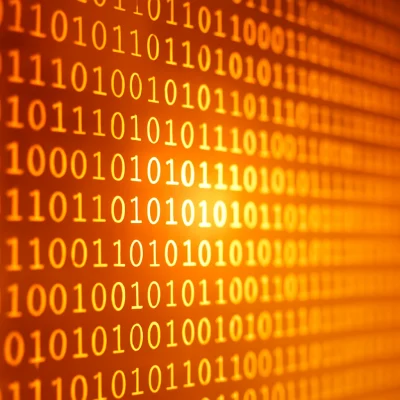The Internet of Things (IoT) is a hot topic in video surveillance. It hasn’t been that long since surveillance cameras only had the capability to record video and upload that video to a central system on demand. Contrast that with the amazing things IoT surveillance systems can do today.
A smart surveillance camera can provide real-time streaming that you can view remotely from anywhere. It can communicate with other devices to potentially set off alarms or alert security personnel to potential threats. Some IoT security cameras even provide advanced facial recognition and computer vision features (i.e. they can derive meaningful info from images) to identify intruders or suspicious individuals. And all those things are only a fraction of what these systems may be capable of in the future. Let’s take a deeper look at where video surveillance began, how IoT has changed it, and where IoT video surveillance is headed in the future.
Legacy Video Surveillance
Closed Circuit Television (CCTV) is a phrase that’s been around since the 1940s to describe video surveillance footage recorded and shared exclusively in-house instead of on an open network or broadcast. While often used for security purposes, CCTV could also be for monitoring inventory or keeping an eye on areas in industrial facilities that aren’t friendly to humans.
CCTV surveillance started out as a grainy black and white video on a few screens in a single room. In the beginning, you couldn’t even record the video to share it. Even in the 1970s, when video recording became widespread, you had to hand someone a physical tape to share a video with them. Still, by this time CCTV was widely used to discourage theft in high-security areas. But the inability to view or analyze the footage remotely in real-time meant that applications were limited during the early days of CCTV.
The Shift to IoT CCTV
IoT is all about connecting devices for greater efficiency. Lots of IoT devices that you’re already familiar with connect to your smartphone through the internet. For example, you can control your smart coffee pot or smart TV directly from your phone. So why shouldn’t the same apply to cameras?
These days, IoT has brought a lot of new potential uses for CCTV. Whereas surveillance cameras used to be about just recording video, smart cameras can cooperate with other devices in an IoT network to go way beyond recording. You can monitor traffic throughout an entire city or analyze the feed from hundreds of ATM cameras from one place. Or, consumers can keep an eye on their houses or offices while they’re away on vacation.
Plus, IoT CCTV can go way beyond mere monitoring. IoT devices can contain both sensors for gathering data and actuators for performing an action based on the information. So an IoT surveillance system can do a lot more than just receive info from cameras. It can also act on it.
For example, if an IoT camera uses facial recognition and discovers unauthorized personnel in a particular area, the camera can send alerts to security guards or lock down the area. IoT cameras combined with smart traffic lights allow traffic control systems to update automatically in real-time to, for example, prioritize safe routes for emergency vehicles. These are only a few of the many applications for modern IoT video surveillance.
Looking to the Future of IoT Surveillance
There’s no end in sight for what IoT surveillance systems might be able to do in the future. In particular, one of the most promising IoT developments we’re going to see soon is computer vision. Computer vision uses AI to provide the kind of visual analysis of an image that a human might normally provide. In one recent survey, computer vision was mentioned as the most important IoT trend for the future by 38% of respondents.
Artificial intelligence is a popular enough concept that it requires little explanation. Many tasks that used to require human intervention and intelligence now rely on AI. For example, at the beginning of CCTV, a human needed to analyze the footage. Now, unmanned analysis occurs automatically in many surveillance systems.
IoT cameras can record, analyze, identify and classify virtually anything, and they can alert other devices within an IoT system accordingly. For example, a camera with embedded computer vision software can “see” smoke before it reaches a smoke detector and tip a fire alarm. Or a surveillance camera can be trained to recognize the faces of a particular person in order to help restrict access to a certain area.
Challenges in the future of IoT video surveillance
There’s no doubt that IoT video surveillance has a bright future, but there are some challenges as well. One thing holding IoT surveillance systems back is latency, a time delay between the surveillance camera seeing a problem and other systems or personnel receiving an alert. That’s because many surveillance systems use a client-server architecture: the video feed has to go through at least one cloud server in order to get to other devices in your system.
However, when using peer-to-peer (P2P) connectivity to remote access a surveillance camera latency is significantly reduced. P2P enables a direct connection between the two “peers” (the camera and the end-user device – for example a smartphone), with no detour through a server. This makes the data stream travel much faster, which gives the surveillance cameras a better user experience.
To learn more about what P2P IoT through the Nabto platform can do for your IoT surveillance systems, read more here or contact us for a consultation with one of our IoT experts.
IoT is an exciting trend with great possibilities for video surveillance. It allows security companies and manufacturers to stand at the cutting edge of modern surveillance technology and provide higher levels of security anywhere at any time. The benefits are well worth the cost and effort of implementing this important technology.
Read Our Other Resources
We’ve also published a range of IoT resources for our community, including:
- Learn how to use IoT to its full potential with The Latest IoT Applications for Smart Buildings: Trends and Benefits
- Learn more about Five IoT Trends to Look Out for in 2022.
- Reduce latency based on our guide: Low Latency In IoT – Why Is It Important? (And How to Achieve It)
- Read more about video streaming with Nabto








